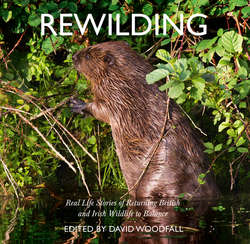Читать книгу Rewilding - David Woodfall - Страница 17
ОглавлениеOak woodland at sunset.
Minimum-Intervention Woodland Reserves
Keith Kirby
The composition and structure of British woods has been shaped by centuries of management. However, in the second half of the twentieth century many semi-natural woods were left alone, either deliberately set aside as minimum intervention reserves, or left largely unmanaged because there was no market for the timber. Most of these areas are small, typically a few tens of hectares; mostly young-mature stands with dense canopies.
Such reserve areas were set up in Wytham Woods under the guidance of Charles Elton, shortly after the woods were donated to Oxford University in 1942/3. He later commented:
It is … clear that Wytham Woods have not for many centuries been ‘virgin’, though if given the chance to do so they might well return to something resembling a natural woodland, even if this would be different in composition from the original Saxon forest. What could be more fascinating than to watch this happen and record its progress over a hundred years or more, armed with the methods of modern ecology?
(The Pattern of Animal Communities, 1966).
He did not use the term rewilding, because it had not yet been coined, but some of the underlying ethos is in this quote: recognition of past management effects, a willingness to step back from future intervention, an implicit acknowledgement that this could lead to unforeseen changes.
Another Oxford ecologist, Eustace Jones, was at the same time making baseline records in what has become the best-documented example in Britain of a minimum intervention reserve at Lady Park Wood in the Wye Valley. Subsequently George Peterken and Ed Mountford have described the changing fortunes of different tree species in the face of disease, drought, mammal attack and falling off cliffs. Lady Park Wood has had highly dynamic tree and shrub layers – other stands, such as that at Sheephouse Wood, have shown very little change over 35 years, apart from a few individual oak tree deaths.
Underneath the canopy, the ground flora of these rewilded unmanaged broadleaf woodlands has tended to decline in species richness at the plot level: light-demanding species are particularly affected. Dead wood has generally increased, although evidence for increases in associated specialist invertebrate species is limited. Losses of existing veteran trees that have become overtopped by younger growth have not necessarily been matched by new ones developing due to stand age structures.
The original ‘non-intervention’ intention has often had to be set-aside: increases in deer range and abundance since the 1950s have forced interventions (fencing, culls) because of the small size of the stands. Trees by paths have sometimes had to be felled for safety reasons. There may be future human-induced changes due to the build-up of nitrogen in the soils from emissions from nearby roads, power stations, etc.
Large-scale rewilding has emerged independently as part of the conservation toolbox in the last decade, but there are lessons that can be learned from studying the longer-running minimum intervention woods.
Different sites will follow different trajectories and the long-term outcomes are not always predictable.
Species may be lost as well as gained; areas may become less diverse in the short term as the effects of past interventions fade out, even if there is scope for longer-term diversification.
External pressures may require some form of human intervention from time to time.
Rewilding is an exciting approach to conservation that should run alongside existing species and habitat management. However, we need more modelling and projection of what changes in landscape pattern are likely to emerge under this approach, along with long-term monitoring of places such as the Knepp Estate and Wild Ennerdale where it is being put into practice.
Pearl-bordered fritillary, Denbighshire.
